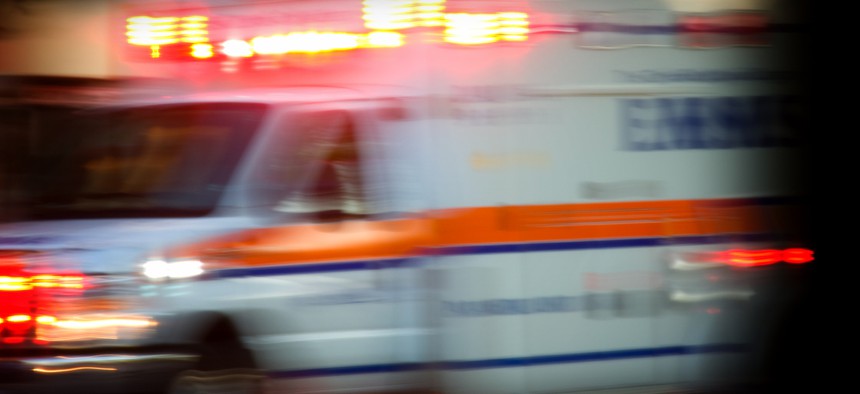Can 'Uber 9-1-1' Improve Emergency Medical Response?

B Calkins / Shutterstock.com
An interesting, but complicated idea: Medically trained Uber drivers with defibrillators and Epi-Pens.
It’s certainly an interesting idea for the future: Could seeking emergency medical attention be as easy as hailing an Uber on a smartphone?
The answer, right now at least, is certainly no.
But Hyper co-founder Minqi Jiang, in a recent Medium piece titled “Uber 911: How the company changing the way we travel can change the way we save lives,” points out an interesting time comparison between the time for an Uber driver to pick up a passenger and the response time for an ambulance.
In New York City, the median response time for an ambulance is 6.1 minutes while the median response time for an Uber is 2.42 minutes in Manhattan and 3.1 minutes in the city’s four other boroughs.
What if emergency medical response could somehow piggy-back off Uber’s ride-booking car service?
Jiang uses sudden cardiac arrest, where quick access to a defibrillator can increase a victim’s survival changes, as an example. What if medically trained Uber drivers could be quickly called upon to respond to heart attack victims?
Jiang writes:
In such emergency medical episodes, every second counts. An Uber can now arrive on the scene several times faster than an ambulance. Even before the dispatch, Uber’s minimal, push-of-a-button interface also requires much less time and effort to request a vehicle than the alternative of dialing 911, waiting for an operator, and explaining the situation to the operator. This presents a major opportunity for Uber to advance the delivery of emergency healthcare: Properly trained Uber drivers could act as a fast vector of care delivery for certain medical conditions, while traditional, expert care is concurrently called upon as “back-up.”
Starting with [sudden cardiac arrest], Uber can begin to save millions of lives a year. It simply needs to mandate all its drivers to carry one automated external defibrillator (AED) and to go through the American Heart Association’s brief (only 4 hours) CPR and AED training course. With more investment, the emergency wait time can be slashed even further if Uber also finds the right partnerships to enable emergency lighting and sirens on its vehicles.
Jiang lays out a diagram of how New York City’s 9-1-1 dispatch chain works and “how an actual person must perform each handoff down the responder chain.”
That observation seems to minimize the importance of having strong dispatch protocols to assess a caller’s situation and appropriately relay the appropriate emergency response from police, fire and/or emergency medical personnel. That life-saving decision tree would be impossible to replicate or replace with a smartphone app.
It might seem unwise to apply Uber’s disruptive transportation model to emergency medical response—a critically important municipal service—but let’s say that you could quickly summon a defibrillator or an Epi-Pen from a medically trained Uber driver.
That would necessitate Uber to either provide or partner on such a quick medical response service and a whole lot of automatic external defibrillators.
As one Redditor recently pointed out:
AEDs are expensive, they require checking to ensure batteries are good, pads aren't expired. Drivers need to be certified. It's not as simple as it sounds.
Certainly not. That would be a complicated regulatory mess to sort out.
But it’s nice to envision a day when a smartphone could be a used tool to seamlessly summon emergency help.
By the time local governments figure that all out, perhaps Amazon’s delivery drones will be ready to quickly fly in defibrillator to help heart attack victims in need of quick medical attention, too. Or better yet, automated automobile networks that would create a clear passage for emergency response vehicles. Now that might not be too far off in the future.
NEXT STORY: How Kansas City, Kan., Is Fixing Its Sewers






